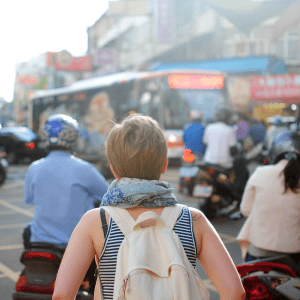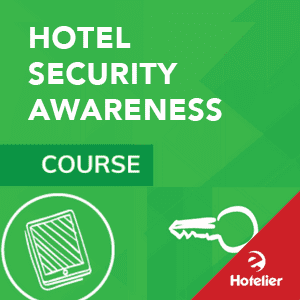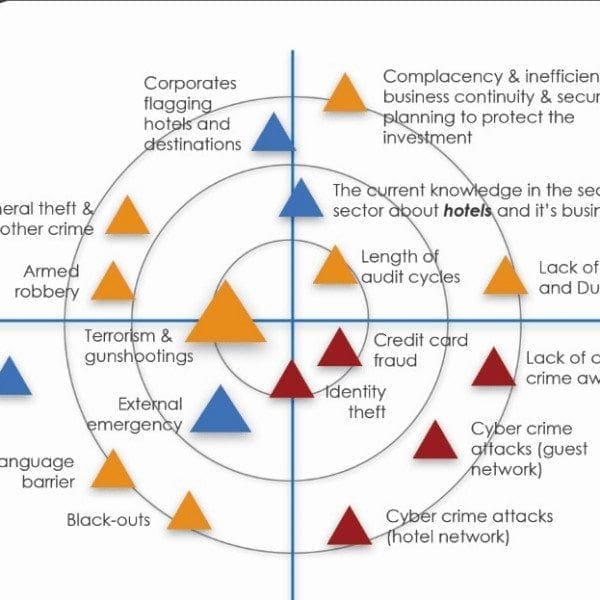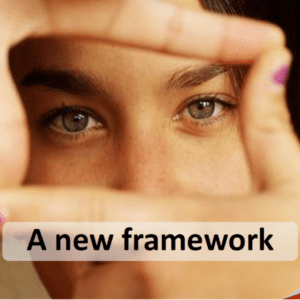As far as hotel security is concerned, at night there are far fewer members of staff looking after a much higher number of guests. Here, Stefan Hiller looks at what hotels can do to mitigate the risk at night and to verify your hotel is safe.
Lets say it is 2pm on a normal week day and you are in a 4-star city hotel with 200 bedrooms and approximately 150 guests are in the building plus 40 employees and 10 managers are on duty. This means there is a total head count of 200 people and in the event of a fire incident, plenty of qualified staff would be able to evacuate everyone quickly and get people to a safe, fire assembly point.
On the same day, but just 12 hours later the proportions between the amount of guests in-house and the amount of staff working in the hotel have completely shifted in the opposite direction and so to has the risk profile. The responsibilities now lean on the shoulder of the Night Manager and/or Night Auditor while maybe around 180 guests are sound asleep.
One to two employees must now accomplish what 10 or 15 evacuation helpers would have done during the day in a short period of time. This is even more a reason to ensure all employees who are working at night know exactly what to do in the event of a fire and that all emergency systems are well maintained. This can only be achieved through training, training training!
Are problems likely?
Problems can be expected, especially when some of the positions are outsourced or have to be handled by one Night Auditor. Smaller hotels often operate with one staff member per shift and they have a much higher risk as the entire operation is linked to that one position. It makes a big difference if the proportions are 150:50 during the day or 180:1 or 180:2 during the night. Having no redundancy in place in case something happens to an employee during the night shift should be of great concern to hoteliers.
How can hotels mitigate the risk at night?
We need to look at the risk factors first. We all know them but we must remind ourselves of them to refocus. Fire, robberies, and theft are the most common incidents at night. But also violence and intrusion could happen and preventive measures must be put in place from a Duty of Care aspect.
When those risks have been identified security measures can be implemented to prevent or at least mitigate the risks to a certain degree and as far as is reasonably practicable. Should incidents occur that cause injury or loss of life, investigators will be looking at the security measurements which have been put in place. If it is proven to be a fault of management, then it can become very expensive for the hotel and in some cases can even mean prison sentences. The investment in a resilient solution is worth it compared to the potential compensation and possible charges.
How can the Onion Principle work for a hotel?
I would recommend hoteliers adopt a layered physical security concept – often referred to as the Onion Principle. First you deter, next you detect, then you try to delay and last you would look at the response plan.
Here is a 10-point checklist which gives hotels guidance and provides recognised global hotel security standards:
1. Train your staff. This is the best advice for every hotel. When your employees know how to use the different systems, then it is more likely incidents turn out with less negative consequences. It is all about your staff knowing the correct routine.
2. Selecting the right people for the job can change everything. Make sure your night shift staff are physically and mentally prepared for the job.
3. Lock up as many areas as possible at night. Work out a solution after the multi-layer principle. The more layers you have available, the more your vulnerabilities are protected.
4. Have someone carry out security walks. It is worth the investment. Only when you physically walk the hotel building every night a few times, will you notice deviations. But be careful. If the night shift does not check all areas carefully, thieves can still hide out hours before they commit a crime. Public bathrooms and also under the skirting of banquet tables are popular hiding areas.
5. Implement a plan B. When you are done with this, then start thinking about a plan C.
6. CCTV systems can prevent but not necessarily stop criminals committing a crime. Blackhats, as we call them in the security industry, have already figured out that CCTV systems usually only record and are rarely are monitored in real-time.
7. The design of the hotel can have an impact on the safety and security. The lighting concept, as well as choosing the right location for the front desk, can make a big difference.
8. Emergency call buttons hidden under the desk can actually help. However, the solution works only if the response is appropriate and efficient. The security industry offers a variety of technical solutions for single workplaces and these vary in effectiveness. Mobile devices with dead men’s control are an option when the user can also be tracked in the building.
9. Lead the talk. It is important to have a conversation on a regular basis with your staff about the risks and discuss different potential scenarios.
10. Look at safety & security from a holistic point of view. Include the night cleaners in the security concept, even if this responsibility is outsourced. When I was doing covert audits in hotels a few years ago, I discovered the best early warning system at night a hotel can have is the night cleaners cleaning the lobby. Over time, most cleaners develop certain working patterns and routines and they are able to notice very quickly when something looks suspicious or is out of place.
About the author
His hotel experience includes rooms division management, pre-opening, fire, health & safety, risk management & cost control. He has worked for leading hotel brands in Munich, Frankfurt, Bremen, Berlin, Cork, Edinburgh and Doha in the Middle East.
He graduated in 2002 as a Hotel Management Consultant at the Steigenberger Hotel Management School. He gained valuable experience as a Cost Controller at the Sheraton Hotel & Towers at Frankfurt Airport. He worked three years in Ireland where he built on his experience as a former volunteer fire officer and became a qualified IOSH Health & Safety Officer. He effectively combined the field of Health & Safety with his Assistant Manager positions.
Stefan now consults to hotels to implement innovative and affordable strategies to raise their level of security to meet growing global demands.



















